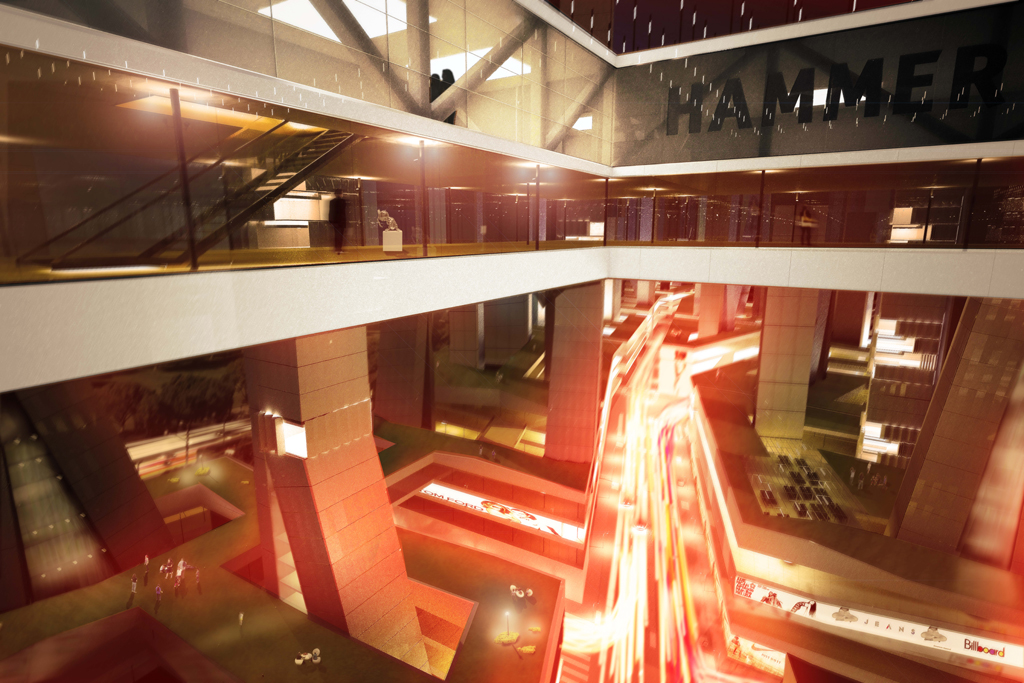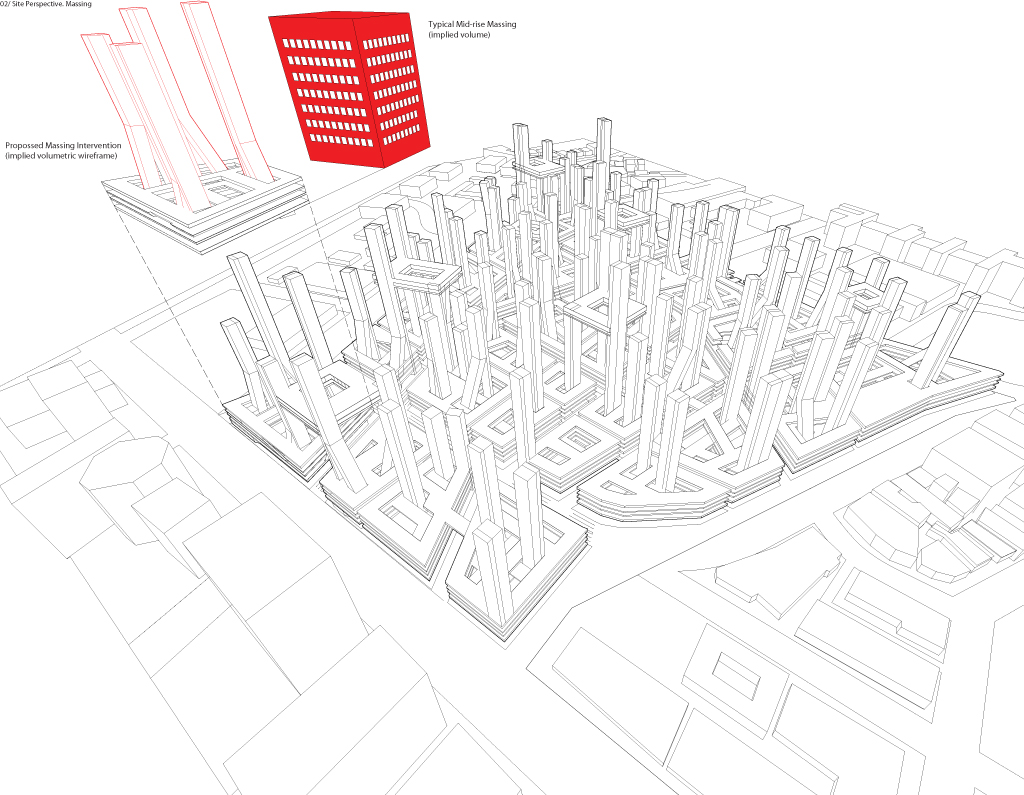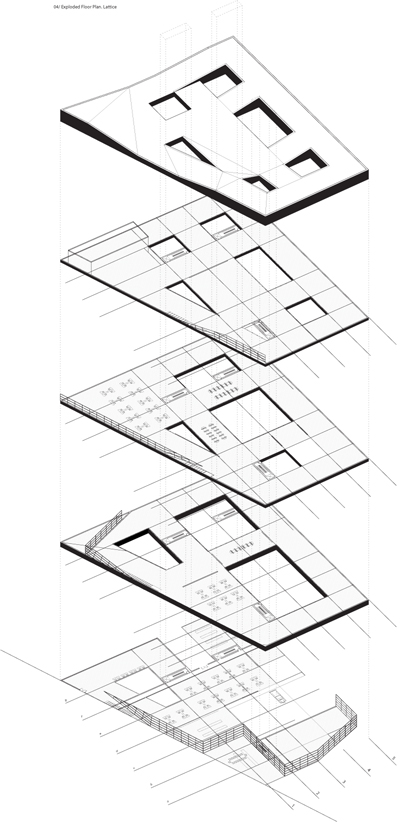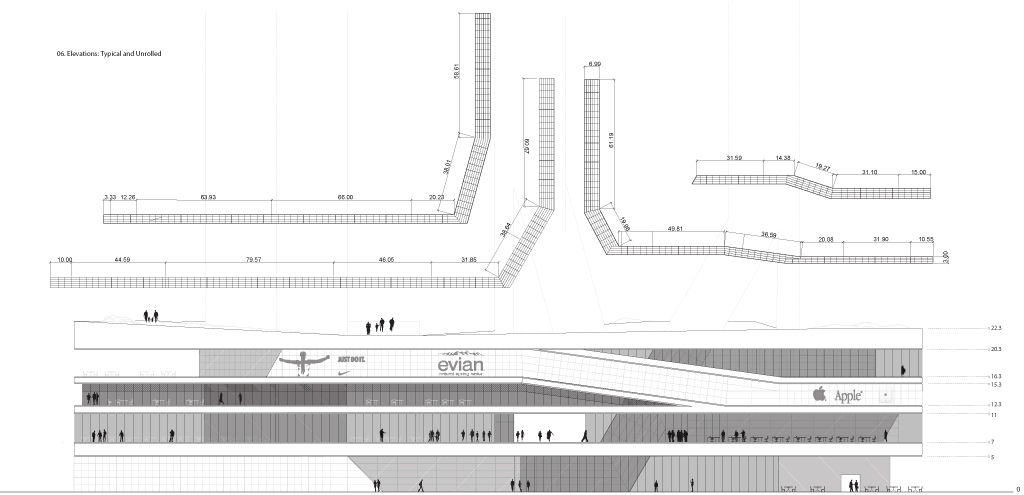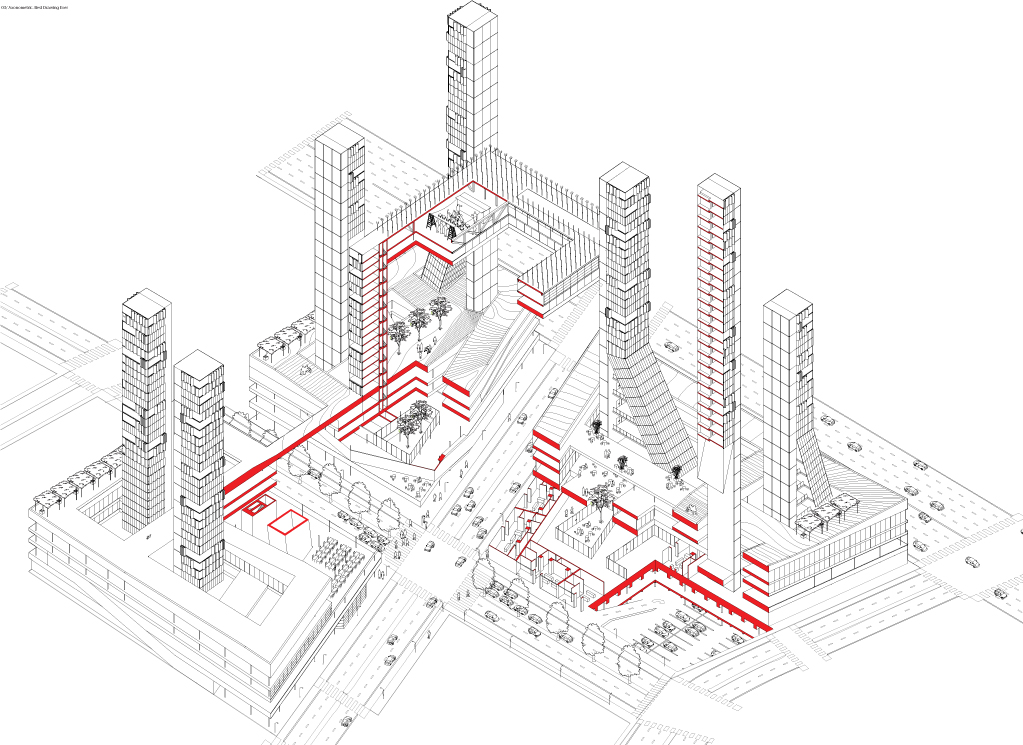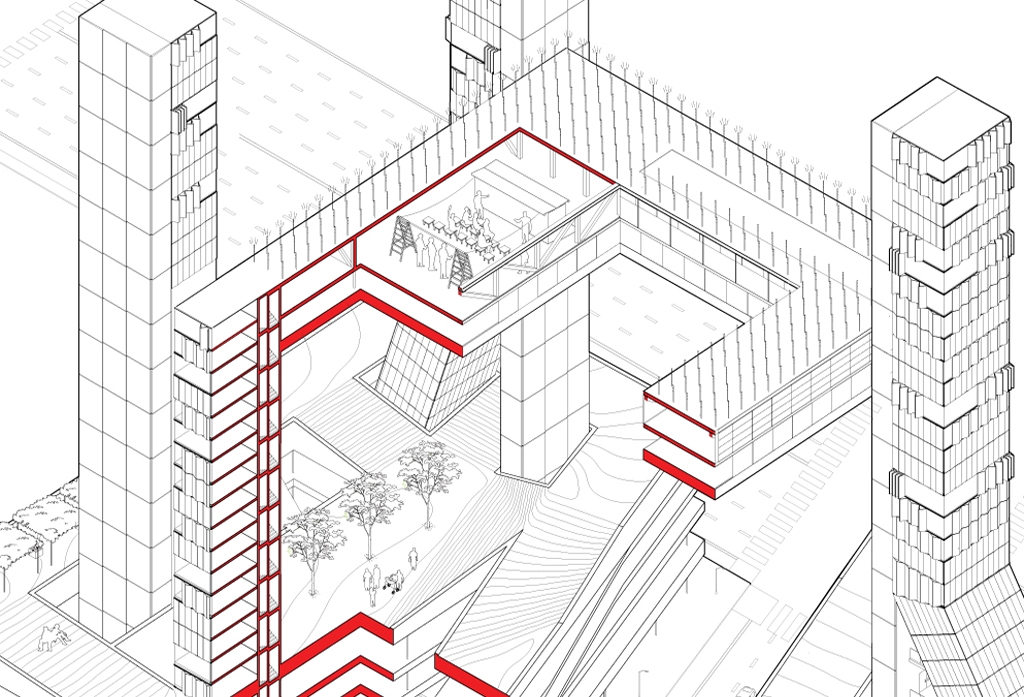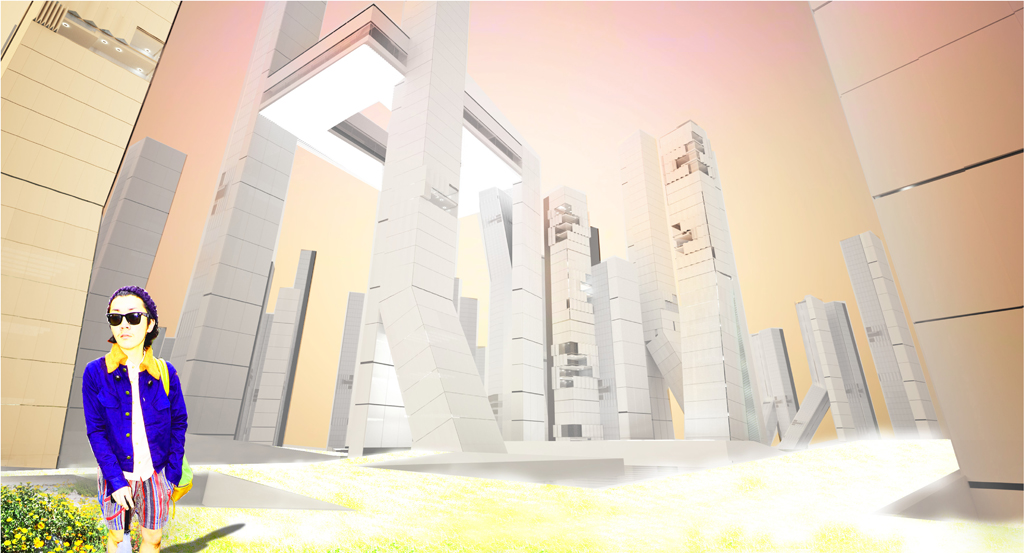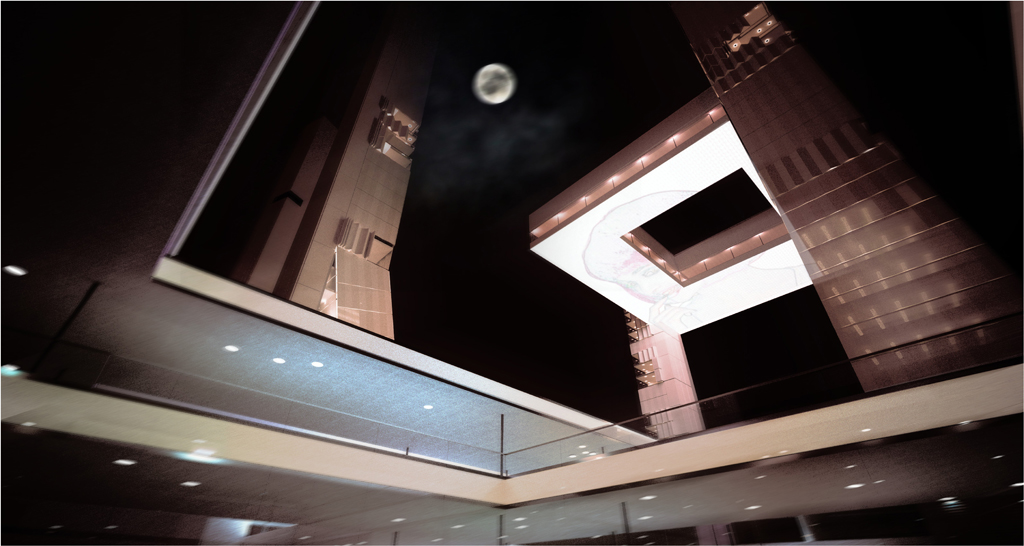Wireframe City
UCLA 2011 | Instructor: Neil Denari | Collaborators: Aaron Baseman, Seb Zecchetto
Density and urbanity often carry a negative connotation, which is unfortunate for they are an inevitable future, even an inevitable now.
However does urbanity always have to be dogged with overcrowding and massiveness?
This is where Wireframe City intervenes. The Wireframe starts with the contemporary notion of the city, namely that of extrusion and maximization of floor area. These two conditions often make for a massiveness lacking in public void space.
To challenge this phenomenon we started to puncture the city plinth level (usually a 1 to 6 story extruded mass) with public and private void space. Turning volume into wireframe. We did this by constructing a tower and courtyard module that interlocks with itself. The design of this module inherently builds in void space, operating both horizontally and vertically, which changes the usual extruded city mass into an airy city network, where city tower and city plinth, verticality and horizontality seam together into a cohesive city lattice.
This massing strategy also has a logic of self preservation, through green infrastructure. The airy 4-story lattice agglomeration, combined with slender tower (100M S) maximizes surface area ideal for contemporary green technology. By allowing sunlight to reach all parts of the site we not only create a new city experience we also maximize the solar and algae energy generating infrastructure. Thus the solar panels, algae tubes, and LED lighting systems will define the new city's aesthetic motif and ultimately become part of the general and programmatic gestalt. The LED's that engulf the lattice constitute a direct output of the skins efficiency.
To explore the idea of the Wireframe City we chose Westwood Village, an already insular area of West Los Angeles, which provides a rich programmatic context for a new kind of urbanism. The consistent increase of students at UCLA and rapidly expanding population of West Los Angeles demands an increase in housing, infrastructure and efficiency. This combined with a localized economy provide the ideal situations to create an independent city.
